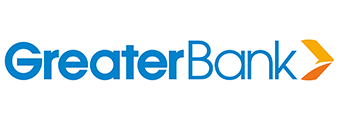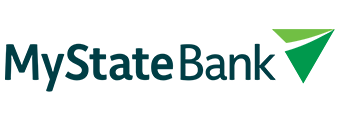With thousands of mortgage products on the market, navigating the home loan landscape can feel overwhelming – but it doesn't have to be. Finding the right home loan for you usually comes down to four key steps:
-
Assess your eligibility
-
Decide which features are must-haves vs. nice-to-haves
-
Compare interest rates on loans that meet your criteria
-
Check the comparison rate to avoid hidden costs
Once you've worked out what you're eligible for – considering the size of your deposit, the type and location of the property, and whether you qualify for the Home Guarantee Scheme, for example – the next step is deciding on features.
Why? Because choosing your ideal loan features helps narrow down your options, giving you a clearer picture of what's right for you.
So, what home loan features are available? Which ones could help you save money and pay off your mortgage faster, and which might end up gathering dust at your expense?
The answers will depend on your financial habits, goals, and lifestyle – all things you likely have a good handle on already.
Here are some of the most common home loan features and how they could benefit your mortgage:
1. Offset accounts – use savings to reduce interest costs
If you're a diligent saver, an offset account can be a powerful tool to reduce your interest costs and pay off your home loan faster.
An offset account works like a transaction or savings account – but instead of earning you interest, it reduces the interest charged on your mortgage. The balance in the offset account is 'offset' against your loan's principal, and you're only charged interest on the difference.
While your repayment amount typically stays the same, more of it goes toward reducing your loan balance – helping you get out of debt sooner.
Let's look at an example:
Greg has a $600,000 home loan with a 5% p.a. interest rate and $100,000 in savings. He decides to keep those funds in a 100% offset account from day one of his 30-year mortgage.
Assuming he doesn't add to or withdraw from that balance, Greg could:
-
-
Save over $230,000 in interest
-
Pay off his loan in about 21 years instead of 30
-
Another advantage? Easy access. Offset accounts usually function like a regular transaction account, so you can access funds via card or online banking.
Tip: Look for a 100% offset account. Some offset accounts only use a portion – typically 80% – of the account's balance to offset the loan.
Who might benefit from an offset account?
-
Consistent or high savers
-
Homeowners with lump sums (e.g. inheritance, bonus)
-
People wanting home loan flexibility without locking funds in
Who might want to avoid it?
-
Impulse spenders or shopaholics
Offset accounts offer easy access to funds, which might tempt you to dip into savings you'd otherwise use to reduce interest.
Looking for a home loan with an offset account? Check out these competitive deals:
Lender Home Loan Interest Rate Comparison Rate* Monthly Repayment Repayment type Rate Type Offset Redraw Ongoing Fees Upfront Fees Max LVR Lump Sum Repayment Extra Repayments Split Loan Option Tags Features Link Compare Promoted Product Disclosure
Promoted
Disclosure
2. Redraw facilities – access extra repayments when needed
A redraw facility allows you to withdraw any extra repayments you've made on your home loan, giving you flexibility if your financial situation changes down the line.
Let's say you've been making more than the minimum repayments each month. A redraw facility lets you dip into that surplus if you need cash for something important, like home repairs, medical bills, or a sudden expense.
Unlike an offset account, a redraw facility doesn't operate like a transaction account. You usually need to transfer funds back to your regular account before spending them.
Example:
Jess has a $400,000 home loan and has paid an extra $20,000 into her mortgage over the years. That money reduces the interest she pays and helps her chip away at the principal faster.
But if Jess needs access to those funds – say for a car upgrade or emergency expense – her redraw facility allows her to withdraw some or all of that $20,000.
Tip: Pay particular attention to the rules surrounding the use of the facility. Some lenders limit redraws, sets minimum withdrawal amounts, or charge fees for redrawing funds.
Who might benefit from a redraw facility?
-
Borrowers who want to make extra repayments and still access those funds later
-
Homeowners with irregular income or who value emergency flexibility
-
People who don't need daily access to their extra funds
Who might want to avoid it?
-
Those who need frequent, instant access to funds
In such cases, an offset account may be more suitable.
It's worth noting that, these days, the vast majority of home loans come with redraw facilities as standard. That means you'll likely end up with one, whether you want it or not.
3. Extra repayments – chip away at your loan, even while fixed
Making extra repayments on your home loan is one of the simplest and most effective ways to reduce the amount of interest you pay and shorten your loan term. But if you're on a fixed rate, you'll need to tread carefully.
Unlike most variable rate home loans – which typically allow unlimited extra repayments – fixed rate loans often cap how much extra you can repay each year, and exceeding that limit could trigger fees.
Some lenders don't allow for any extra repayments while a borrower is on a fixed rate, while many allow up to $10,000 per year, others allow more – or even unlimited – extra repayments during fixed periods.
Exceed the cap, and you could face break costs or early repayment fees, which might wipe out the benefit of making those extra payments in the first place.
Tip: Always check your lender's terms and conditions for fixed loan extra repayment caps and ask whether additional repayments are allowed via redraw or offset (some fixed rate loans come with these features)
If you're planning to make large lump sum payments, consider whether a split loan – part fixed, part variable – might give you more flexibility
Who might benefit from making extra repayments on a fixed loan?
-
Borrowers who want to reduce their interest burden but prefer the predictability of fixed rates
-
Those with small but regular surpluses in their budget
-
Homeowners planning to refinance or switch once the fixed term ends
Who should be cautious?
-
Borrowers likely to exceed their lender's cap
If that's you, you might be better off with a variable or split loan. -
Those planning to pay off large lump sums during the fixed term
-
Anyone who hasn't read the fine print
Surprise fees can sting.
4. Split rates – mix fixed and variable rates
Can't decide between the certainty of a fixed rate and the flexibility of a variable rate? A split rate loan could offer the best of both worlds.
A split home loan lets you divide your mortgage into two portions – fixing the interest rate on one part and keeping the other on a variable rate. This setup can suit borrowers who want some certainty, but don't want to give up the perks of variable loans entirely.
Example:
Tom and Casey have a $500,000 mortgage. They split their loan's interest rate:
-
-
$300,000 fixed for three years at 5.89% p.a.
-
$200,000 variable at 6.19% p.a.
-
The fixed portion gives them predictability and protection from rate hikes, while the variable portion allows them to make extra repayments, access redraw, and take advantage of potential future rate cuts.
Tip: You can often choose any split ratio – it doesn't have to be 50/50. And make sure to check what features are available on both portions – not all variable loans allow an offset account, for instance.
Who might benefit from a split loan?
-
Borrowers who want to hedge their bets on interest rate movements
-
Those planning to make extra repayments, but not enough to warrant a fully variable loan
-
First home buyers or budget-conscious borrowers wanting some repayment certainty
Who might want to avoid it?
-
People who value simplicity
Managing two loan portions can be more complex. -
Borrowers planning to refinance or sell soon
Splitting may complicate break costs or discharge fees.
Would a split rate suit your financial habits? These low-rate mortgage deals offer a split rate option:
Lender Home Loan Interest Rate Comparison Rate* Monthly Repayment Repayment type Rate Type Offset Redraw Ongoing Fees Upfront Fees Max LVR Lump Sum Repayment Extra Repayments Split Loan Option Tags Features Link Compare Promoted Product Disclosure
Promoted
Disclosure
Promoted
Disclosure
5. Interest only periods – lower repayments, for now
A mortgage that allows for interest only repayments allows you to stop repaying the principal balance – ergo, the debt – for a period. This period is usually between one and five years. During that time, your repayments will be lower, but you won't be reducing your home loan balance.
Interest only repayments are often popular with property investors, who can deduct interest payments from their taxable income, or owner-occupiers during financially demanding life stages.
But there's a trade-off: once the interest only period ends, your repayments will jump – often significantly – as you'll be left paying off the principal over a shorter timeframe.
Who might benefit from an interest-only loan?
-
Property investors looking to maximise cash flow and tax deductions
-
Borrowers with short-term financial pressures
E.g. parental leave, education costs -
Anyone expecting a boost in income or to refinance or sell before the interest-only period ends
Who should be cautious?
-
First home buyers or those planning to live in the property long term
You'll pay more interest overall and build equity slower -
Borrowers who might struggle when repayments increase
-
Homeowners hoping to pay off their mortgage sooner or build equity over the long term
6. Home loan portability – take your loan with you when you move
Thinking of upgrading or downsizing your home but don't want to go through the hassle of refinancing? A portable mortgage could be your solution – but not all lenders offer home loan portability.
Home loan portability allows you to transfer your existing home loan to a new property, instead of closing your current mortgage and applying for a new one. It's designed to save time, paperwork, and potentially some upfront costs.
How does it work?
When you sell your current home and buy a new one, your lender essentially swaps out the property used as security – while keeping the same loan, interest rate, features, and terms. This is particularly helpful for those on a fixed rate, as they won't face break fees.
Who might benefit from loan portability?
-
Homeowners who already have a great loan and want to keep it
-
Those who are moving house but not increasing their loan size
-
Borrowers wanting to avoid reapplying or going through a new loan approval process
Who might want to avoid it?
-
Borrowers who want to increase their principal balance or restructure their loan
Portability may not apply in this case -
Anyone considering changing lenders to get a better deal
-
People assuming it's a simple process
Portability still requires lender approval and legal steps
7. Home loan top-ups – borrowing more without refinancing
Need extra funds for a renovation, car purchase, or even to consolidate debt? If you've built up equity in your home and your lender allows it, a home loan top-up could allow you to borrow more without refinancing.
The top-up amount is simply added to your existing loan balance, and you'll make repayments on the total amount going forward.
Example:
Laura bought her home in 2018 for $500,000 and currently owes $350,000 on her mortgage. The home is now valued at $600,000, meaning she has $250,000 in equity. Laura has decided now's the time to renovate her kitchen and bathroom, and she's been quoted $50,000 for the works.
Her lender allows her to borrow up to 80% of her property's current value ($480,000), so she could top up her loan by up to $130,000 if she wanted to. Laura tops up her home loan by $60,000, allowing her to upgrade her benchtops while she's at it.
Who might benefit from a home loan top-up?
-
Homeowners with equity who need funds for other purposes
-
Borrowers who prefer not to go through the refinancing process
-
People consolidating higher-interest debts into their home loan
Who should be cautious?
-
Borrowers close to the 80% LVR threshold
Lenders generally don't allow top-ups that would push a mortgage's loan-to-value ratio (LVR) above 80% without a borrower paying for lenders mortgage insurance (LMI). -
People who are already struggling with repayments
If you're already struggling to meet your repayments, borrowing more might not be wise.
8. Automatic rate discounts – rewards for your loyalty
Some lenders – especially digital-first or non-bank lenders – now offer built-in rate discounts that automatically kick in as you pay down your mortgage. These are typically tied to your LVR or how long you've held the loan.
Instead of waiting for the borrower to ask for a better deal, some lenders – like Unloan and Athena
– proactively reduce your rate once you meet certain conditions.
Example:
Unloan offers a 0.01% discount on your interest rate every year for up to 30 years (capped at 0.30%).
Athena's AcceleRATES program reduces your rate in steps as your LVR falls below key thresholds (e.g. <70%, <60%).
Tip: Just because you've got a built in discount, it's still worth checking if the starting rate is competitive compared to others on the market
Who might benefit from automatic rate discounts?
-
Borrowers who want a set-and-forget home loan
-
Those who value transparency and want to avoid negotiating with lenders
Who might want to look elsewhere?
-
Borrowers looking for package loan benefits (e.g. credit cards, fee waivers)
Many of these lenders are no-frills. -
People who prefer fixed rate certainty
These features are typically offered on variable home loans. -
Borrowers who qualify for ultra-low rates upfront elsewhere
These borrowers might not need the incremental discounts.
Related: Understanding the most common types of home loans
Image by Drazen Zigic on Freepik















Share